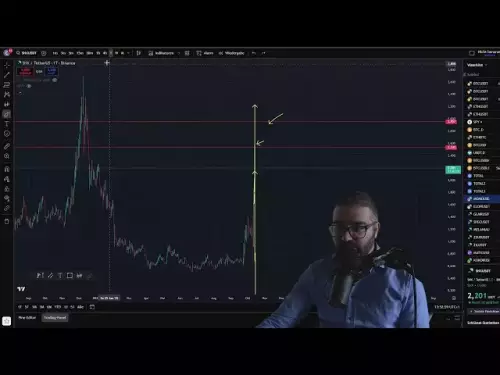A deep dive into the world of stablecoins, focusing on USST's initial challenges and the broader implications for dollar-pegged cryptocurrencies.

Stablecoin Saga: USST's Peg Wobble and the Quest for Dollar Stability
Stablecoins, pegged to the dollar, are supposed to be, well, stable. But the recent debut of USST threw a wrench in that narrative, raising questions about the road to stability.
USST's Rocky Start
USST, a new stablecoin from STBL, launched with the promise of a dollar peg. But almost immediately, it dipped as low as $0.96. That's like ordering a 'stable' coffee and getting a wobbly cup. This kind of volatility highlights the challenges new stablecoins face in building trust and maintaining their peg.
Ondo Finance Partnership: A Step Towards Stability?
STBL's partnership with Ondo Finance, leveraging Ondo’s USDY (a tokenized yieldcoin backed by U.S. Treasuries), aims to inject some institutional-grade stability. The idea is that using real-world assets (RWAs) as collateral strengthens the reserve model. It's like swapping out a shaky foundation for solid bedrock.
The Importance of Credible Collateral and Liquidity
The early depeg of USST underscores a crucial point: confidence in a stablecoin hinges on deep liquidity, transparent operations, and trustworthy collateral. Catie Romero, CEO of BABs, astutely pointed out that these wobbles are often liquidity-related, rather than structural failures. Small pool depth and uneven flows can amplify minor sell-offs.
Beyond the Peg: Governance Tokens and Ecosystem Viability
The drama didn't stop at the USST peg. STBL, the ecosystem's governance token, also took a hit. This highlights the interconnectedness of these systems. If the stablecoin's perceived resilience falters, confidence in the governance token can quickly erode. It's a reminder that a stablecoin's success is about more than just holding the peg; it's about the overall health and perceived viability of the entire ecosystem.
A Glimpse into the Future of Stablecoins
Despite the initial hiccups, STBL's approach, focusing on tokenized reserves and yield-bearing assets, is interesting. STBL's architecture returns profits to users who provide collateral. This is in contrast to traditional stablecoins, which direct yield to issuers. By incorporating USDY, a product backed by Treasuries and cash assets, the protocol strengthens its reserve model with transparent, yield-generating instruments designed for institutional scale.
Looking Ahead
So, what does all this mean for the future of stablecoins? It means that the journey to creating a truly stable, dollar-pegged cryptocurrency is paved with challenges, and the market is constantly evolving. USST's experience serves as a valuable lesson for other newcomers: build trust, ensure liquidity, and back your coin with credible collateral. If not, your stablecoin might just end up being a little… unstable.























































































